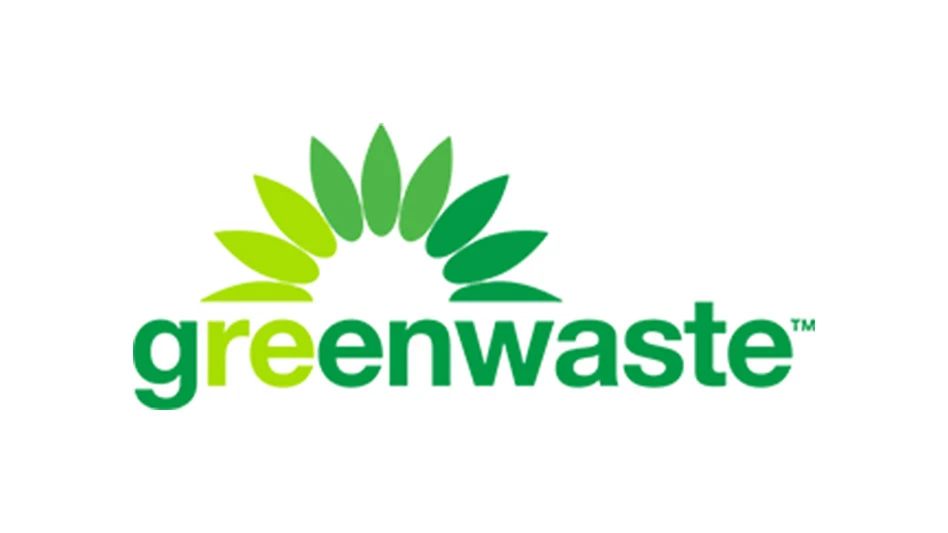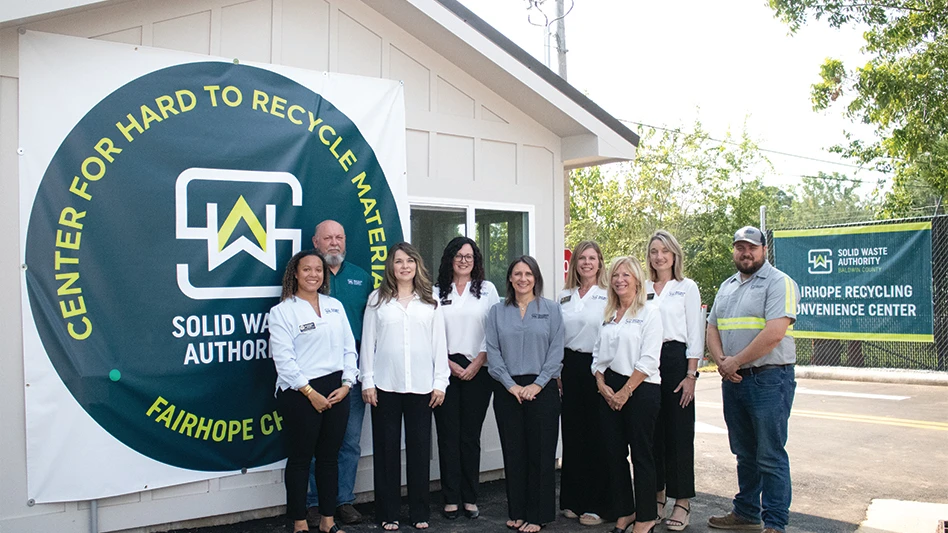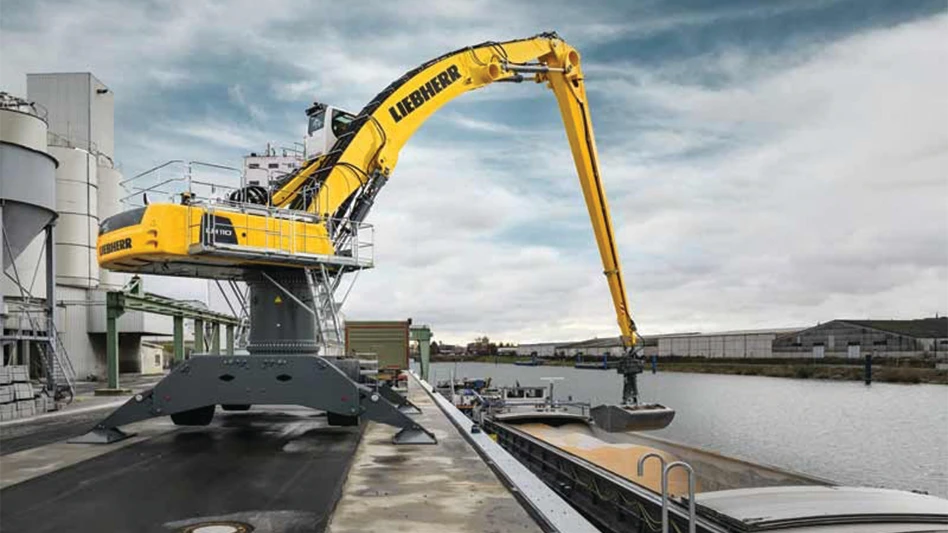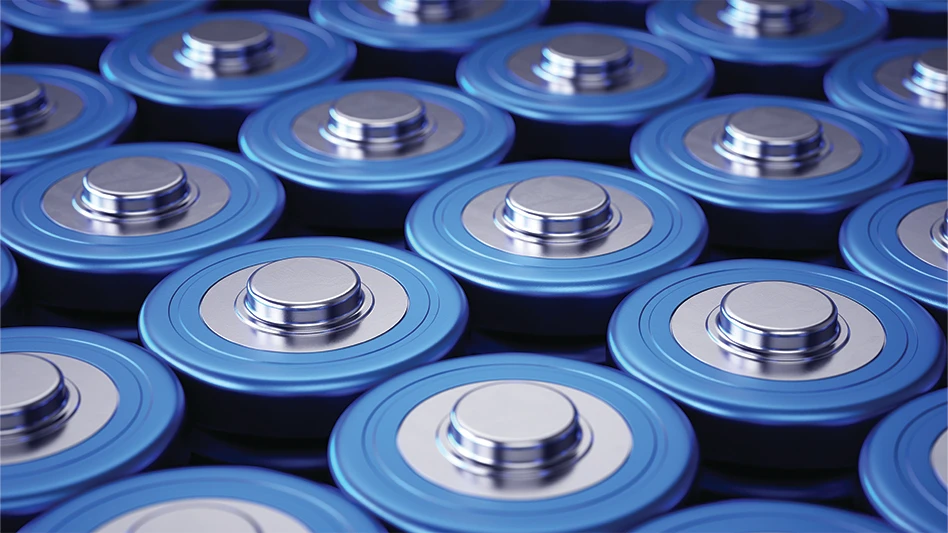National Gypsum of Charlotte, N.C. expects to complete construction of a $79.1 million gypsum recycling plant in Shippingport, Pa. (northwest of Pittsburgh) that will produce 600 million square feet of wallboard annually and will use 100% recycled materials.
In addition, the plant will use recycled paper for its facing and backing, and will recycle 100% of its own production waste. Production is planned to begin in January 2000.
For the C&D industry it’s a good news/bad news story. The good news is that National Gypsum’s investment in the plant shows that major manufacturers have faith that recycling gypsum is a profitable venture. The downside for C&D is that most of the gypsum being used in the operation will come from by-product gypsum recycled from a coal-fired power plant operated by Pennsylvania Power Company, a subsidiary of FirstEnergy, Akron, Ohio.
When completed, the Shippingport plant will rank among the largest single-line gypsum wallboard plants in the world. It will use non-hazardous waste from Penn Power’s Bruce Mansfield Plant—material that currently is landfilled. According to Jay Watt, director of business development for National Gypsum, a similar new operation will be opened in St. Louis.
In addition, the company is adding a line to its Tampa, Fla. plant. All of these operations, and one near New Orleans, La., use gypsum reclaimed as a by-product from scrubbing power plant fuel.
The location of the new Pennsylvania plant, just a conveyor belt ride from the power station, eliminates one of the major concerns with C&D waste movement: the cost of shipping broken or recovered wallboard to a plant. Indeed, shipping remains a major hurdle to recycling wallboard even in areas where such recycling is mandated by law. In some areas of the country, National Gypsum pays for the waste product; in others, the utility pays National to take it away.
There is a lot of wallboard produced in this country. In total, about 15 million tons of new drywall is produced each year. California alone uses more than 10% of the nation’s total, or about 1.8 million tons per year, according to the state Waste Prevention & Market Development Division.
Most drywall waste—about 64%—is generated from new construction. About 12% of new construction drywall is wasted during installation. That figures to about two million tons per year, with over 200,000 tons in California, according to the state’s Waste Management Board in Sacramento. Demolition counts for 14% of drywall waste; manufacturing, 12%; and renovation 10%. That figure will vary with the construction industry and the number of natural disasters, such as earthquakes and floods, in any given year.
REUSE, RECYCLING ISSUES
According to Ken Sandler, team leader for the Recycling Means Business Team with the U.S. Environmental Protection Agency (EPA), the federal government has no rules regulating drywall disposal. However, the EPA has been active in research with groups like the National Association of Home Builders (NAHB) in researching alternative uses for drywall.
In a current project being conducted with NAHB in the state of Indiana, EPA and local home builders are grinding both the gypsum and the wood fractions of construction waste and applying it on the ground around the construction site as a soil amendment. Early results are promising.
Another alternative to putting broken wallboard into landfills is to “store” the material in the cavities between walls in new construction. There it will stay until the building is razed. “The theory here is that there will be more opportunity in the future for recycling the material,” Sandler explains.
Although wallboard makers like National recycle sub-standard gypsumboard as part of the manufacturing process, they use little to no C&D material. “It is just not economically feasible to do it yet,” Watt explains. Even with clean construction wallboard scraps, the paper backing must be removed. Demolition scrap presents a whole host of challenges.
Because of the number of changes or additions to wallboard once it is hung in a building, one of the ongoing issues with recycled gypsum board from demolition sites is the quality of material demanded by the recycler.
Generally, screws and nails have to be removed from the material. While easily accomplished with a magnet, it still has to be done. Also, wood and other foreign material have to be taken out of the mix if a pure gypsum product is required.
Wallboard tape usually breaks down in compost. Or, it can be screened out once the gypsumboard is crushed. Joint compound is made primarily of limestone or gypsum and usually does not present a problem.
Asbestos can be a concern with a small fraction of the material. However, where asbestos is present it imposes a whole set of difficulties for the recycler. Paint usually covers demolition drywall. The possibility that the paint is lead-based always should be considered when taking down a structure built before 1978.
Once a clean product is defined, delivery methods of getting the material to a processor vary. Obviously, a site with a rail line is the preferred option. However, some C&D sites will have to deliver material in 40-yard boxes. Paying a teamster to drive a truck much more than 50 miles can quickly eat up any profit potential from taking the material to a processor rather than to a landfill.
OTHER NATIONS
The exception to the landfilling of gypsum board is in Western Canada, where provincial law requires the gypsum fraction to be removed from the debris before the material goes to the landfill. Because almost all of the landfills in that area are not lined and sheetrock leaches—and because gypsum is chemically a very basic material (CaS04 2H20, or calcium sulfate dihydrate), raising the pH of the groundwater markedly when it leaches into the soil—disposal of wallboard in landfills is forbidden. In some cases noxious hydrogen sulfide gas can form. Although it is a mineral like limestone and occurs naturally in many parts of the world (in some areas, farmers even add it to their soil as a soil amendment), in other places it is undesirable in landfills. Plus, it is bulky.
“With the so much material mandated for recycling, you’d think that over time a market for the material would develop,” says Michael Taylor, executive director of the National Association of Demolition Contractors (NADC), Doylestown, Pa. “Our members up there have to pay $7 a ton to have the material picked up and hauled to a recycler. Over time, you’d think someone would come up with an alternative and that would stop. Not so,” he says. Material still is being hauled away and the C&D contractor is still paying.
The situation is different is eastern Canada where there is no law mandating recycling, but there are several plants that are recycling gypsum board. A proposal has also been put together to construct a recycling operation in western New York state.
While the volume of recycled C&D material grows every year, there may be a limit to just how much material the market can absorb. Is the ceiling short of 100%, or can all of the material from a demolition be used? In Europe, for example, that 100% figure is not seen as an ideal goal but is mandated legislatively.
Western Canada is not unique in requiring gypsum board to be recycled. In the European Union it already has been legislated that no component of a demolished building can be disposed of in a landfill after the year 2010. That means nothing, including the window glass that, Taylor notes, is a relatively cheap component to produce virgin and a tough one for which to find recycling markets.
In some countries—notably Denmark and Holland—there has been significant progress toward meeting the 100% goal. However, the larger nations like England and France (which, politically, almost never agree on anything) both are in accord that the deadline to have 100% C&D recycling by 2010 is unrealistic.
“In the United States to date, there has been no economic value in gypsum board and virtually none is being recycled,” Taylor says.
While C&D contractors will take out any valuable components before wrecking a building, the rate of return on the material has to be significant before the contractor can invest the time and labor in its removal.
He points out the problem a C&D contractor has with such laws. The demo man is the first trade on any demolition site. In the traditional knock-down, speed is of the essence. The property owner is champing at the bit to get the site cleaned and leveled so construction can start on the new building. The C&D contractor will remove anything of value (like copper pipe or valuable fixtures). Then, the quickest way to destroy a building is to implode it. The glass has to be removed first, along with any asbestos or other contaminants, and the building charged. After the charges are set for the explosion, the demolition is accomplished in a matter of seconds.
However, regulations requiring the recycling of 100% of the gypsum mean that every room has to be dismantled. There usually are five surfaces (four walls and the ceiling) which have wallboard. A worker has to be uncommonly productive for a C&D contractor to justify paying labor $15 to $18 an hour to recover gypsum board.“While it is a fun, easy job from the workers’ point of view to sling a sledge hammer, it is a tough proposition for the contractor to make it pay,” Taylor says.
RECYCLING USES
California has defined several potential markets for drywall waste. In the reuse area, they recommend larger sheets be used for gunite support. Gunite is concrete sprayed on at high pieces, for example in swimming pool construction. Cutoff pieces of new construction drywall can be used as forms to support gunite as it is being sprayed. Habitat for Humanity, the nonprofit group that builds homes for poorer people, accepts new drywall sheets that are half-size or larger.
There are agricultural uses for drywall. In some areas, it can be used as a soil amendment, although the California Waste Management Board does not recommend use of demolition drywall scraps for certain uses such as golf courses and residential lawns.
There is a firm in New Jersey adding recycled gypsum to stucco and a New York company is looking into the use of a recycled gypsum-sludge product for bulking and drying. New York is also funding a study on the use of recycled gypsum for use in settling dirt and clay particles in turbid water for water treatment.
There is some promise to using recycled gypsum to facilitate the leaching out of sodium salt in soil along roads where salt is used during the winter. Gypsum can be combined with wood shavings to make good animal bedding. It can substitute for sawdust or sand to absorb moisture. Gypsum is used to mark lines on athletic fields, to absorb grease in mechanics’ shops, and even makes up over 90% of the inert material in some flea powder products for pets.
NADC’s Taylor is the first to admit that recycling gypsum board is a social good. “We recommend recycling wherever possible,” he says. However, he maintains there has to be an economic payback or there will be trouble down the road. He notes Canada’s 11% unemployment and the high unemployment rates in much of Europe and wonders whether a part of the reason for the low unemployment in the U.S. is basing programs on market factors as well as on social good.
One possible market for some gypsum, as well as other fractions of the C&D process, is landfill cover. NADC has been closely watching a process that aims to convert into landfill cover all of a project’s miscellaneous fines (all of the little stuff left on the ground after the largest pieces of C&D material have been carted off).
The process has several attractive points. For one, it turns a waste product into a commodity with value. Landfill cover is often the largest single cost in running a municipal landfill, since landfills have to be covered each night. From the landfill operator’s point of view, it would allow the city to charge a tip fee at the front end and then be able to use the material to reduce a part of the landfill’s operating costs.
In California, Marcia Kiesse is working on proposed regulations for C&D/inert debris. In years past, the state had only one kind of permit: Full. “A few years ago we adopted a tier permit system to better address specific wastes and activities, e.g., ash, compost, biosolids, transfer stations. Since then we have been writing regulations to establish tier placement,” she explains. (See the draft at www.ciwmb.ca.gov.)
While nobody is claiming they have the ultimate solution in hand, progress is being made in the handling of the wallboard component of C&D waste. Projects like the Shippingport recycling operation and the tests being done by NAHB and EPA hold promise for a long-term solution to the challenge of handling wallboard from construction and demolition projects.
The author is an environmental writer and Recycling Today contributing editor based in Strongsville, Ohio.
Get curated news on YOUR industry.
Enter your email to receive our newsletters.

Explore the August 1998 Issue
Check out more from this issue and find your next story to read.
Latest from Recycling Today
- Dow, Mura Technology cancel chemical recycling plant in Germany
- Brightmark, Lewis Salvage partnership processes 1M pounds of medical plastics
- US paper recycling rate, exports down in '24
- Century Aluminum to restart idled production at South Carolina smelter
- Teaching kids the value of recycling
- ELV Select Equipment, Reworld aid NYPD in secure firearm disposal
- Some observers fear plastics treaty talks veering off course
- Advanced Polymer Recycling acquires TKO Polymers






